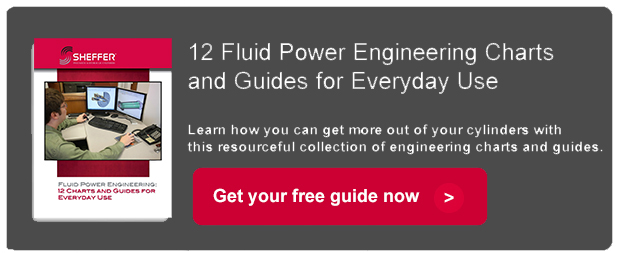
It is Halloween night and the goblins are out begging for candy, I hear the door bell and head towards the door to see what is going to be greeting me this time. After they leave I check my display outside where I have fake blood pumping down a fake corpse lying in a coffin. The pump spatters a little because some of the fake blood evaporated. As I am adding more 'blood' to my pump I start thinking about work and how a hydraulic cylinder will act if not properly set up...
Around Halloween I love haunted houses and one thing they like to do is make these loud slamming noises as you walk by which usually makes me jump, but I have seen other poor victims just about jump out of their skin. How many times have you been scared by a loud slam and about jump out of your skin?
On the inside of a cylinder there is a rod seal and rod seals are sort of like that, you slam the cylinder by not putting fluid in it before operating it or by not bleeding it properly and the rod seal gets so scared it sometimes jumps right out of it’s skin. Let me explain a little more thoroughly: if you don’t get the 'life blood' (fluid) into the cylinder before you operate, you create a booster because the cylinder will compress the air inside the cylinder to such a high pressure that the rod seal can’t handle the pressure and jumps out of 'it’s skin', the rod gland. It all happens at a very fast rate which is why the cylinder slams.
Ok, so what is a rod seal and a rod gland?
The rod seal keeps the fluid of the cylinder inside of it so it doesn’t leak out around the rod which sticks out the end of the cylinder and moves back and forth during operation. The rod gland is the part bolted on the head of the cylinder where the rod sticks through and it sits there happily on the cylinder for the rest of it’s life holding the rod seal and rod wiper in place.
We don’t want the life blood to leak out of the cylinder by now scaring the rod seal into jumping out of it’s skin and we do this by setting up and starting your cylinder properly. When someone is bleeding it is usually not a good thing but in this case we want to make a cylinder bleed. We’ll get to the bleeding in a few minutes but first let’s start with the basics and go from there.
You need to get the 'life blood', hydraulic oil or whatever liquid your cylinder requires, into the cylinder and one way to do this is to put it into the cylinder prior to hooking up the hydraulic lines. You can do this by just pouring oil into the ports and filling it as much as possible. (Sometimes this is not possible and, if not, we will cover that too.) The next steps are how you proceed with or without getting any life blood into the cylinder prior to hooking up the hydraulic lines.
After you hook up the lines you want to begin by applying very low pressure, just enough to get the cylinder to move back and forth. Oh yeah, you don’t want anything attached to the rod that will cause resistance because this will cause you to put more pressure into the cylinder and you could create the booster as discussed above. Once you get the cylinder moving back and forth with minimal pressure you can begin to bleed the cylinder. 'Bleeding' the cylinder simply means getting as much air out of the cylinder or system as possible. If your cylinder is equipped with bleed screws you simply loosen those and operate your cylinder back and forth at the lowest pressure it takes to move the cylinder back and forth. You want to do this until you are confident as much air as possible has left the system. Then you simply tighten the bleed screws back up and you are ready to do a gradual increase in pressure test until you reach your operating pressure. If your cylinder doesn’t have bleed screws then you can crack the lines loose at the cylinder and bleed it that way by doing the same way as described above.
I do caution you that some of the fluid will leak out as you are bleeding the cylinder so be aware that the more pressure you have on the system the more it will come out and it could possibly spray you or your boss. Hmmmmmm, now there’s a thought... Use the lowest pressure possible.
Bleeding a cylinder is important because not only does it protect the cylinder it protects the entire system. Any air in the cylinder could work its way through the system and could create problems in valves or anything else in the system.
Thought of any other unexpected hydraulic maintenance tips while reading this ghoulish post? Share them with us below in the comments!
Image credit: Upsplash

